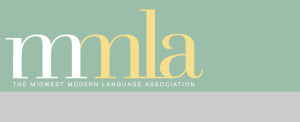 CFP
CFP
2015 Midwest Modern Language Association Conference - Arts and Sciences
Columbus, Ohio
November 12-15, 2015
Deadline: April 5, 2015
“Intersections of Art and Science in the Long Nineteenth Century”
The organizers welcome papers that explore the intersection of “art” and “science” in the long nineteenth century. From Keats’s enigmatic intonation “beauty is truth, truth beauty,” to Ruskin’s declaration that “high art differs from low art in possessing an excess of beauty in addition to its truth, not in possessing excess of beauty inconsistent with truth,” to the aestheticism of the fin de siècle, the nineteenth century witnessed a fraught renegotiation of the relationships between knowledge, art, and science. If the opposition between C.P. Snow’s “two cultures” is one legacy of the nineteenth century, we aim to take seriously the “and” of “arts and sciences,” highlighting the consonances and mutualities as well as the disjunctions that characterized the period.
The organizers are interested in artistic representations, practices, and engagements with the empirical sciences, and in the epistemological shifts that constructed the “artistic” and the “empirical.” Examples are countless. Coleridge collaborated with his physician-superintendent James Gillman on The Theory of Life. John Constable’s cloud studies are renowned for their meteorological rigor. George Eliot represented medical doctors as modern heroes in a sociologically-inflected novelistic form. Gerard Manley Hopkins wrote letters to Nature magazine. Erasmus Darwin’s poem The Botanic Garden makes significant contributions to Linnaean taxonomy, while Byron’s doctor John Polidori founded the vampire genre. Indeed, scientific practice depends upon forms of representation, and artistic practice necessarily involves knowledge-work.
Paper topics might include:
- The intersection of art and science in historical and biological museums and collections
- The cooperation of artists and scientists in investigating the supernatural, from the Ghost Club to occultism
- The formal and aesthetic dimensions of scientific practice, representation, and dissemination
- Literature and the emergence of the human sciences via the rise of realism
- Curricular and disciplinary shifts at Oxbridge and the Dissenting Academies, the incursion of the German University model, and how these phenomena led to the separation of art and science
- The cultural politics of specialization and the lingering figure of the generalist “man of letters”
- Developments in book production, publishing, selling, purchasing, and collecting; the transformation from eighteenth-century “bibliomania” to nineteenth-century bibliography
Alternatively, take a philological or genealogical approach:
- How does this period reify “arts” and “sciences” into distinct disciplines and epistemologies? How did literature become narrowly associated with belles-lettres? Chart the transition from “natural philosophy” to science as we now conceive of it.
The organizers also welcome proposals that reflect upon nineteenth-century arts and sciences by way of contemporary disciplinary questions:
- How do quantitative and/or digital methods help us understand the productions of the nineteenth century—and the relationship between art and science they embody—anew?
250-word abstracts are due by April 5, 2015 and should include name, institutional affiliation, email address, and paper title.
Send to Andrew Welch at awelch2@luc.edu